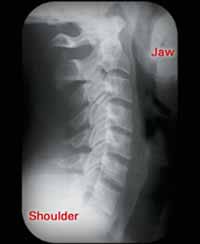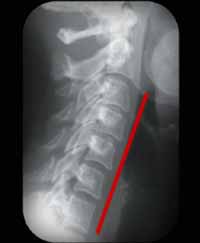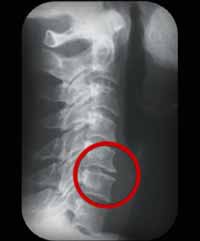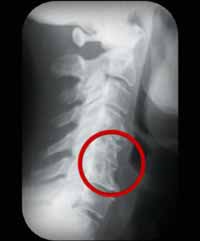Chiropractic care is about more than just relieving back pain — it’s a hands-on, natural approach to helping your body move, feel, and function at its best. It focuses on the relationship between your spine, nervous system, and overall wellbeing.
When your spine is out of alignment — due to stress, injury, or day-to-day strain — it can affect how your body feels and performs. Chiropractors are trained to find these imbalances and help restore movement, reduce tension, and support your body’s ability to heal.
Your nervous system controls nearly everything in your body — and it relies on your spine to function smoothly. When the joints in your spine lose proper movement, it can create pressure and irritation that impacts nerves, muscles, and even internal systems.
Chiropractors use a specific technique called an adjustment — a carefully controlled movement designed to restore motion to a stiff or misaligned joint. Often, you’ll hear a small ‘click’ as the joint releases.
By improving spinal function, chiropractic care helps reduce discomfort, restore balance, and support your body’s natural healing processes.
At Queenstown Health, chiropractic is often part of a wider care plan, integrated with physiotherapy, massage, acupuncture, and osteopathy — all working together to help you move well and feel well.
Every body is different — so every session is too. At Queenstown Health, our chiropractors take a whole-person approach to helping you move and feel better.
Whether you’re dealing with discomfort from an injury, long days at a desk, the wear and tear of sport, or simply the natural changes of ageing, we’re here to help. Treatment often includes gentle spinal adjustments to restore movement and reduce tension in the joints, nerves, and muscles — improving how your body moves and functions, from the inside out.
We also work closely with our wider team of physios, massage therapists, osteopaths and acupuncturists to make sure your care is tailored to your lifestyle and goals — not just your symptoms.
Spinal decay is the body’s slow response to long-term stress, poor posture, or uncorrected injuries. Think of it like tooth decay — it happens gradually, often without pain at first, and gets worse when left unchecked.
When the spine doesn’t move properly, it adapts — but not always in helpful ways. Over time, these changes can lead to stiffness, nerve interference, and a loss of function.
This isn’t just “getting older” — it’s your body compensating for long-standing tension and misalignment. The good news is, with the right care, we can help prevent it from progressing.
The Three Phases of Spinal Decay.
We use a simple three-phase model to help you understand how spinal changes show up — and what we can do to help.
Textbook Normal
A healthy spine has natural curves, clear space between discs, and moves freely. Everything is balanced, and the nervous system can do its job without interference.
 |
This would be considered a textbook “normal” side view of the neck. |
Phase One: Early Changes
The normal curve starts to flatten. Movement may be reduced, and discs can begin to thin or compress. You might not notice symptoms yet, but the spine is already adapting under stress.
 |
The first thing you notice is a loss of the normal cervical curve. |
Phase Two: Degeneration Begins
Joint surfaces become uneven, bone spurs may start to appear, and inflammation can set in. The body begins laying down extra bone — thinking it’s healing — but this limits movement further.
 |
Adjacent joint surfaces become rough and uneven. |
Phase Three: Advanced Decay
If left untreated, the spine begins to fuse in places. Movement becomes severely restricted, and damage is harder to reverse. Pain may still not be obvious, but long-term function is compromised.
 |
The affected bones have lost their individuality and ability to move. |
Gentle, supportive care for a more comfortable pregnancy — and a smoother birth.
Pregnancy is a time of incredible change. As your body adapts to support two, your spine and pelvis can experience increased strain — often leading to discomfort in the back, hips, pelvis or legs.
Chiropractic care during pregnancy focuses on keeping your body balanced, aligned, and functioning at its best. By gently relieving tension and supporting the nervous system, we help reduce pain, improve mobility, and create more space for your baby to move into the best position for birth.
We’re proud to support many pregnant mums-to-be here at Queenstown Health. Common reasons for care include:
-
Lower back pain
-
Pelvic pain
-
Neck and shoulder tension
-
Leg discomfort
-
Chest tightness
How We Help
We use safe, specific techniques to gently adjust the pelvis and spine — easing pressure, improving movement, and helping you feel more comfortable as your body changes. Our goal is to support both a smoother pregnancy and an easier delivery.
Advice & Ongoing Support
Throughout your pregnancy, we offer personalised guidance on posture, gentle exercises, and ways to physically prepare for birth and recovery.
You’ll also benefit from our close collaboration with in-house physiotherapists, who provide expert prenatal and postnatal support including movement therapy, massage, breathing awareness, and relaxation techniques. This integrated approach helps your body hold adjustments and feel better, longer.
Gentle care to support your child’s movement, growth, and development.
At Queenstown Health, we offer experienced, age-appropriate chiropractic care for babies, toddlers, and growing children. Our goal is simple: to help your child move, grow, and thrive with as much comfort and ease as possible.
We follow best-practice paediatric protocols developed through advanced training in the UK and years of clinical experience. Each child’s care is tailored to their unique needs, age, and stage of development — because no two kids are the same.
How Chiropractic May Help
Some childhood challenges may be related to how the spine, nerves, and muscles are working together. By gently supporting the nervous system and improving mobility, chiropractic care may help ease tension, support development, and improve comfort.
Parents Often Seek Our Help For:
-
Head turning issues or a strong side preference
-
Feeding and latching difficulties
-
Flat spots on the head (plagiocephaly)
-
Digestive discomfort – reflux, bloating, constipation
-
Excessive crying or unsettled sleep
-
Delays in rolling, sitting, crawling, or walking
-
Poor posture or “W” sitting
-
Repetitive falls or poor balance
-
Bedwetting or difficulty concentrating
We know how important it is to feel confident in your child’s care. That’s why we take time to explain what we’re doing, answer your questions, and work gently at every step.
If you’re wondering whether chiropractic care might help your child, we’re always happy to chat.
Elite care for athletes — and anyone who moves.
At Queenstown Health, our team includes internationally recognised, FICS-certified Sports Chiropractors who are helping shape the future of sports chiropractic in New Zealand.
Whether you’re a weekend warrior or a professional athlete, we provide expert, movement-based care that supports performance, recovery, and injury prevention.
Who We Work With
-
Neki Patel, FICS Oceanic Representative, brings decades of experience working with international athletes. He coordinates a multidisciplinary team for the Australia/New Zealand PGA and provides ongoing support at the NZ Open.
-
Cole Mackie, President of Sports Chiropractic New Zealand (SCNZ), leads medical support for the 9x national ice hockey champions, SkyCity Stampede. Cole is also the Sports Chiropractor for the NZ U18 Men’s National Team, having travelled with them to Istanbul (2024) and Mexico City (2025), as well as supporting the Cook Islands U19 Men’s team during their Oceania campaign in Vanuatu.
-
Madison Hooper, FICS-certified Sports Chiropractor, currently supports both the Wakatipu Wild and the New Zealand Women’s Ice Hockey Team, The Ice Fernz, who secured silver at the IIHF Division 2 Group B World Championships in Dunedin (2025).
Our sports chiropractors don’t just treat pain — they optimise function, mobility, and resilience under pressure. Whether you’re training for your next big event or just want to stay active without setbacks, we’ve got your back.